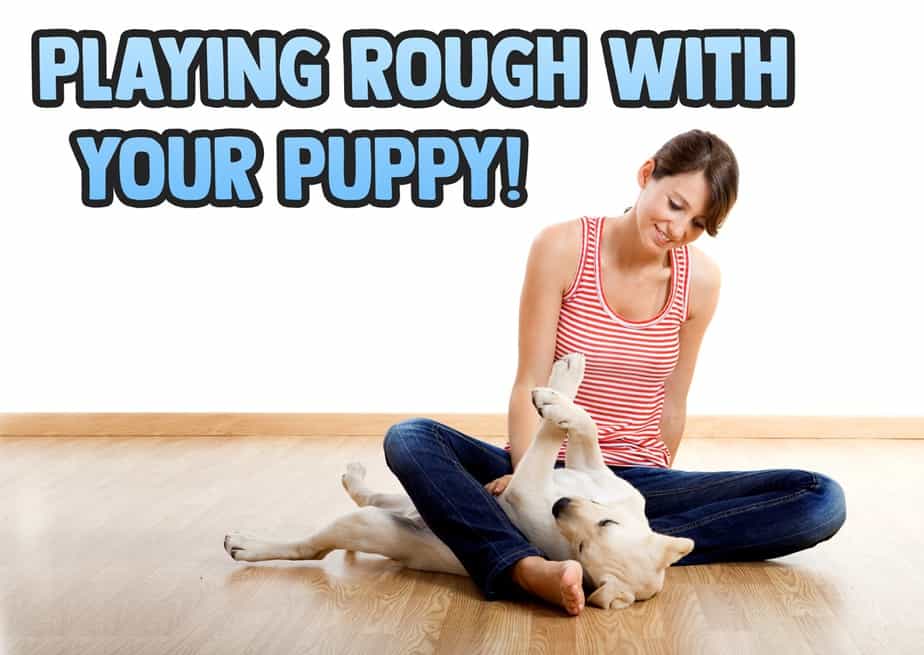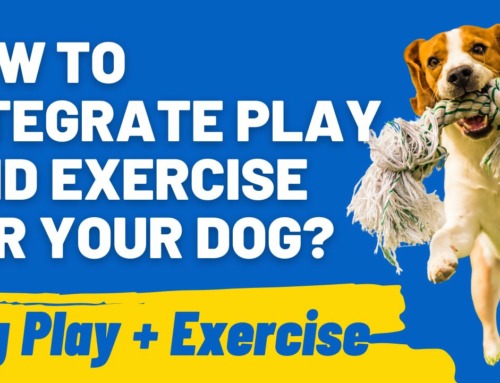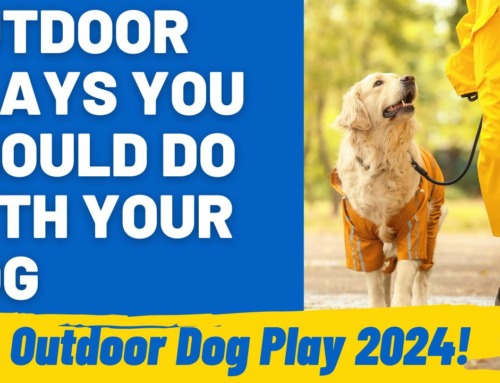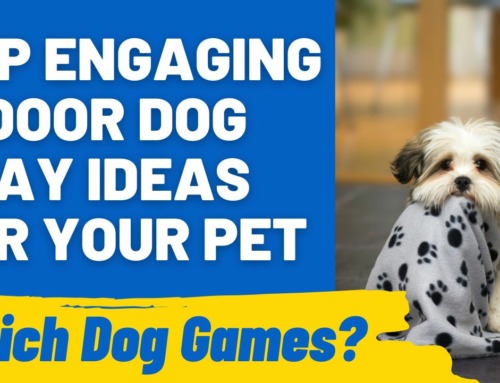One of the fun parts of owning a puppy is getting to wrestle with them and play rough, along with games like Tug of War! However, not all types of play are appropriate for puppies.
In this article, we will take a look at some of the best ways to play with your puppy, and how to set boundaries so that you set your puppy up for success in the future.
Playing rough with puppies is very tempting. Puppies can be notorious for biting, so it is important to not reinforce this behavior through inappropriate rough play. When playing rough, there are appropriate ways to do so. A preferred way to play rough is to hold a toy in your hand, and not touch your dog directly with your hands. Additionally, rough play should have an obvious start and end, as this type of interaction is not always desired. Puppies often lack boundaries and being clear on expectations is important! Being mindful of body language that might indicate over excitement is critical. If your puppy bites inappropriately, rough play time should come to an end. Dr. Marti DudleyVeterinarian Answer
Can I wrestle with my puppy?
Yes, within a set of guidelines, you can wrestle with your puppy. It’s important that your puppy also wants to wrestle as you can easily scare them if they aren’t excited about the game. Ensure puppy wrestling has a specific start and end, so your puppy doesn’t wrestle at inappropriate times.
With my dogs, when we are engaging in wrestling play, often called personal play, I will get down on the floor and hold my hands up as though they are claws. This hand signal, coupled with “I’m gonna get you!” is their cue that it’s OK to wrestle right now.
Afterwards, an “all done!” and showing my puppy my empty hands is the cue that it’s time to stop.
When you’re first teaching your puppy how to take a break, you may want to redirect them to another activity, such as a Kong, that will help them learn to calm down.
Puppies can be very over excited and often don’t know how to calm down when they are young, so it’s important to teach and enforce this skill.
When you are wrestling with your puppy, it’s important to be constantly aware of their body language.
Puppies that are trying to leave or are acting shy or worried are too overwhelmed.
Instead, ease back on your play or give them a break.
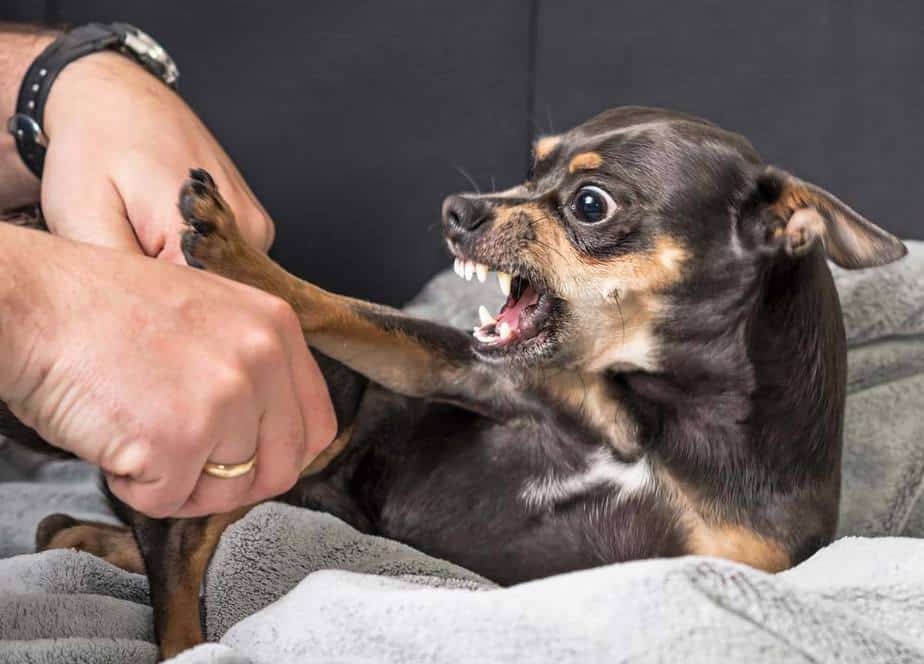
You shouldn’t ever grab and hold your puppy while playing. It’s important that they always have the choice to leave if they choose.
Instead, many dogs enjoy the back and forth of the claw hands and “I’m going to get you!” type of play and wrestling.
You can slowly reach for your puppy, poking them with your hands if they are comfortable. Then, encourage your puppy to bounce back and get you, too!
One important aspect of wrestling and physical play to remember when you have a young puppy is that they have much sharper teeth than an adult dog.
Accidental nicks and cuts to your skin are common because of the sharpness of their teeth.
However, it’s important that you are also teaching them how hard is appropriate to bite.
Your puppy may play back by slapping you with their paws, but many dogs will also play back by mouthing you. Since dogs don’t have hands, their mouth is their alternative!
If your puppy bites hard enough that it hurts, the game is over. Your puppy needs to learn that they cannot play by biting hard.
One option is to use toys when your puppy is very young, so they have something else in their mouth instead of your hand.
By following these guidelines: ensuring your puppy is comfortable and having fun, dedicated start and stop cues, and ending the game if your puppy bites too hard – you’ll be able to have a fun relationship of play with your puppy.
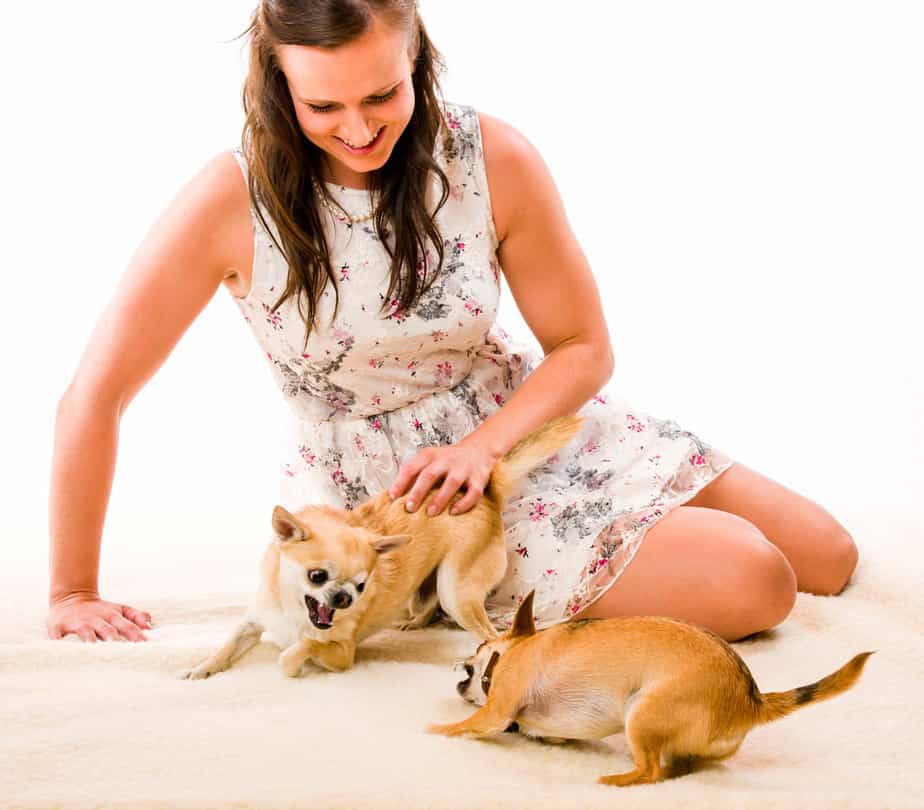
Is playing tug of war ok with my puppy?
Yes, playing tug of war is ok with puppies. It’s important to implement start and end times of the game, and to setup rules of play. Rules should include no teeth on human hands, have a cue, such as “get it”, as well as a release command.
Tug of war is one of my favorite games to play with dogs. I spend a lot of time teaching my dogs how to play tug of war, and I make my own tug toys, too!
It’s a great game to use as a reward when training, and also a great game to build your relationship with your puppy.
As with wrestling, it’s important that you have start and stop guidelines for playing tug of war with your dog.
The rules should include only playing tug of war with your dog when you have explicitly cued them to “get it!” (or whatever cue you choose), as well as ensuring your dog will drop the tug toy whenever they are asked.
The rules of tug also should include absolutely no teeth on human hands – you bite the toy only during this game.
Having these guidelines in place will ensure you don’t have a dog that grabs things from you randomly to try and start a game of tug. You need to be able to end the game when you need to, and that you stay safe from the chomp of a dog that’s excited and doesn’t care where their teeth land.
Not only is tug of war a great way to engage with your dog while rewarding them during a training session, but it’s an excellent way to teach them how to think while they are excited and how to follow boundaries, too.
Being able to play a hard and fun game of tug of war, and then drop the toy the first time they are asked, is an excellent skill for your puppy to learn. It helps teach them impulse control and how to listen when super excited.
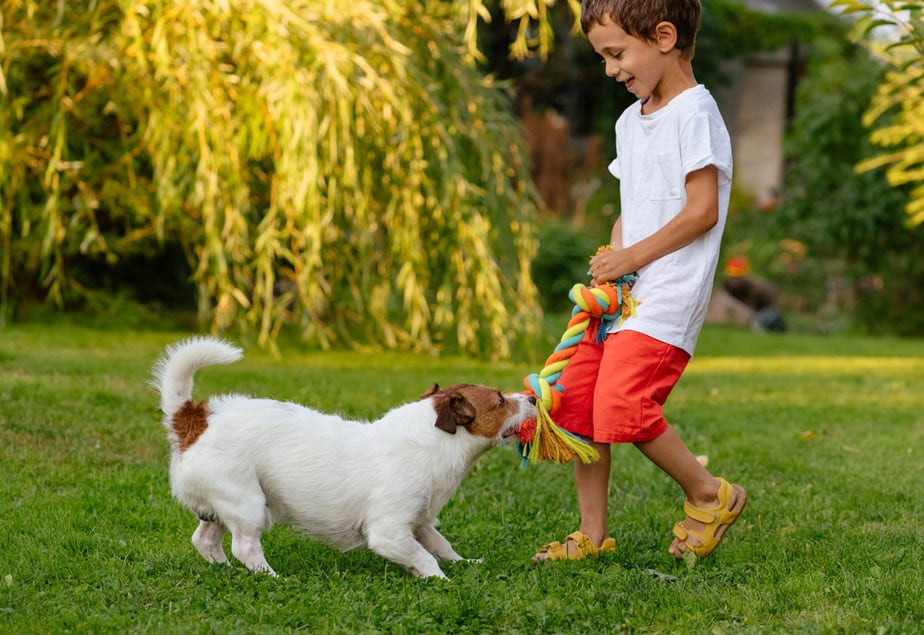
Am I being too rough?
You can easily play too rough with your puppy if you forget to pay attention to their body language. Play can easily turn sour and actually lead to a breakdown in your relationship with your dog if you constantly overwhelm them.
You want your puppy to be bouncing back at you for more, without being irritated or overwhelmed.
With very young puppies, you’ll likely want to start playing very gently. Pretend you are playing with something soft like cotton candy, and you want it to retain its shape while you play without being dented.
As your puppy is bigger and more confident, you can start to play rougher if your dog enjoys it.
Some dogs will only ever enjoy gentle play, and that’s OK! The level of “too rough” varies for each dog.
My dogs personally engage with light shoves and slaps and enjoy playing more physically rough than a variety of other dogs that would be overwhelmed.
This is partly due to their personalities, and partly due to the relationship we’ve built. My dogs know they can trust me not to scare them or be too rough.
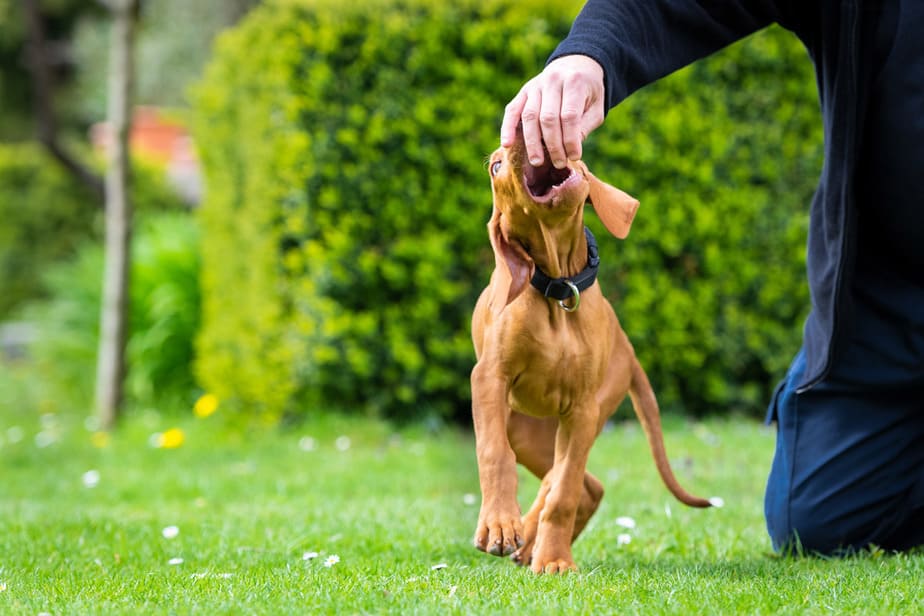
Will playing rough lead to aggression in puppies?
Playing rough can lead to aggression if you are forcing your puppy into uncomfortable situations. When your puppy is overwhelmed, scared, and doesn’t know what else to do, they will likely growl and bite to tell you that you’ve pushed them over their limit.
This is why it’s so important that you play only in ways that your puppy is comfortable.
The concept of the Ladder of Aggression can be used to visualize how puppies and dogs escalate their behavior.
When they are first overwhelmed, they are at the bottom of the ladder. They may lick their lips, turn their head away, yawn, or blink slowly.
These are all signs of stress or anxiety.
If another dog or person notices these signs and changes their behavior to make the dog more comfortable, it’s easy for the dog to climb back off the ladder.
However, if these signs are ignored, the dog often chooses to continue to climb the ladder until they get their point across that they are scared and uncomfortable.
They may climb until they are trying to escape, or frozen in fright.
Then they will often growl, then snap, and then bite.
Thus, overwhelming or scaring a puppy can lead to aggression as a way to make the scary thing stop.
Here is the ladder of aggression for your reference:
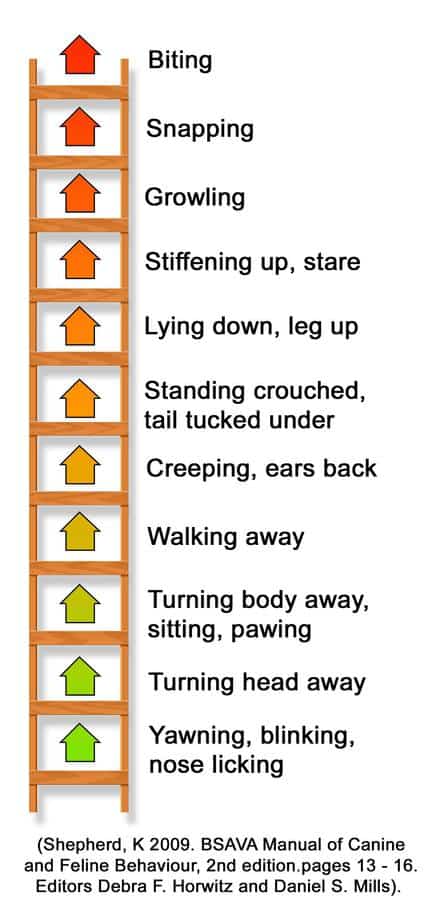
However, appropriate play where the human and dog take turns playing, and are bouncing off of each other, will not lead to aggression.
Instead, it provides dogs with a natural outlet for their energy and natural behaviors.
It also gives you a great way to teach your dog that you are pretty fun. It adds something extra to rewards you give your dog by playing with them too, instead of just tossing them a treat.
I also love using play to identify my dog’s levels of worry.
If we go to a new place and they can’t play with me, then I know they are overwhelmed and not ready to work or train yet.
Acceptable games to play with my puppy
There are a variety of games that are good for puppies, as long as you explore what your puppy loves best and ensure they are always having fun along the way.
These include:
-
Personal play and wrestling. As discussed earlier, it’s a great way to reward your dog with yourself and also to further your relationship with your dog.
-
Tug of war. This game is perfect for teaching your dog how to think when excited and have boundaries and rules.
-
Hide and go seek. You can play this either by hiding and calling your dog – practicing their recall – or by hiding treats and having them use their nose to find them.
-
Take your dog on a walk and let your dog sniff and explore! Dogs use their noses to see the world, and it’s much more enriching than a boring walk in a heel.
-
Fetch and chase. While you don’t want to play this repetitively, tossing a toy for your puppy and encouraging them to chase it and bring it back a few times can be a fun game for breeds that like to retrieve.

